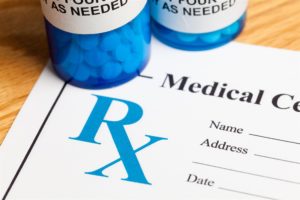Each year there are countless accidental overdoses that end up causing serious injuries or deaths in the individuals who took the drugs. One might assume the overdoses are caused by addicts since they typically require higher and higher amounts of their favorite substance to achieve the desired results. However, what is equally concerning is many accidental overdoses are from first-time users.
Many first-time users that give in to peer pressure to try the latest drug can quickly discover using it once was enough to cause them to have a reaction to it. They could experience a seizure, vomit, or, worse, slip into a coma and never wake up or end up having a heart attack and dying. Even if they survive their first use, many popular drugs today only require a single use to develop an addiction to the substance.
According to research on drug overdoses and deaths by the Centers for Disease Control and Prevention (CDC), in 2016 there were approximately 64,000 drug-related deaths. This marks a significant increase in drug overdose deaths from 2015 when there were 52,404 documented deaths.
Part of the increase in deaths is due to the number of new synthetic drugs and new psychoactive substances (NPSs) that have continued to increase from one year to the next. Based on data collected by the UNODC (United Nations Office on Drugs and Crime), in 2012 there were 260 NPSs and, by 2015, there were 483 NPSs.
What drug is most popular with addicts?
 The most popular drugs that addicts favor largely depend on the demographic, age group, socioeconomic background, and other factors. Currently, opioids and synthetic-based opioids are among the leading cause of overdose deaths in adults under the age of 50.
The most popular drugs that addicts favor largely depend on the demographic, age group, socioeconomic background, and other factors. Currently, opioids and synthetic-based opioids are among the leading cause of overdose deaths in adults under the age of 50.
This amounts to around one hundred deaths each day from drug overdoses using either of these substances. It is estimated, in the coming decade, that the number of daily deaths from either substance could reach as high as 250 deaths each day, from a report published by STAT.
What are opioids?
Opioids are generally considered pain-relieving drugs. They include a wide array of legal and illegal substances. Some of the more common names you may recognize include:
- Heroin
- Hydrocodone
- Oxycodone
- Fentanyl
- Morphine
- Codeine
According to the CDC, heroin usage of 18 to 25-year-olds has significantly increased over the period from 2002 through 2013, and it continues to increase. In addition, three out of four people that have started using heroin previously used other forms of opioids, including prescription drugs and synthetic forms such as fentanyl.
How did opioids become the drug with the highest overdose rates?
In the 1990s, prescription drug manufacturers were expanding the types of pain relievers beyond those that were already in use,  like morphine and codeine. It was already well documented that people could become addicted to both of these drugs, so it was important to limit usage of them to treat pain in patients.
like morphine and codeine. It was already well documented that people could become addicted to both of these drugs, so it was important to limit usage of them to treat pain in patients.
The new drugs being developed were believed, at that time, to not be addictive like morphine and codeine. Pharmaceutical companies assured healthcare providers people would not develop addictions—something we all know now to be false. However, by the time it was realized these drugs were just as addictive if not more so than previous pain relievers, it was too late.
As a result, overdose rates continued to increase and grow. Based on data published by the National Institute on Drug Abuse (NIH), in 2015, alone, there were over two million people addicted to prescription and synthetic opioids, with close to 591,000 people currently suffering from heroin addiction.
Other statistics collected by the NIH show:
- Between 21 to 29 percent of people who take prescription and synthetic opioids will abuse them.
- Around 80 percent of addicts first abused prescription and synthetic opioids.
- An estimated 8 to 12 percent of prescription and synthetic opioid abusers develop addictions.
- In the past, it was more common for people to use heroin first, then switch to prescription opioids.
- Between 4 to 6 percent of opioid prescription drug users will start using heroin.
Prior to the 1990s, people would first abuse and become addicted to heroin, then switch to prescription drugs. However, as it became easier to obtain prescriptions from physicians and healthcare facilities, due to a lack of tracking, there was a gradual shift in abuse patterns.
At that time, people would become addicted to and abuse opioid prescriptions first, and then supplement their habit with heroin. As drug regulations started to change in the 2010s, with better monitoring of opioid prescriptions along with increased costs for such drugs, people have started more frequently making the transition from prescription drugs to heroin.
Why do opioids have the highest overdose and death-related rates?
Unlike other types of substances, say marijuana or alcohol, where it can take time to develop an addiction from repeated usage,  with opioids all it takes is using the drug once to trigger an addiction.
with opioids all it takes is using the drug once to trigger an addiction.
Keep in mind, even if you are using prescription opioid drugs responsibly to manage pain, you often experience euphoric feelings because your pain goes away temporarily. Then, when it returns, you are tempted to take another dose, even if it is not at the prescribed time.
Furthermore, to achieve the same level of pain-free feelings requires higher and higher dosages. It is not uncommon for people to start self-medicating and taking double or even triple the prescribed dose to achieve the same effects as they did when they first started taking prescription opioids, which can lead to an accidental overdose.
 Eventually, once your prescription runs out and you can no longer get it filled, you can feel so overwhelmed because you can no longer experience the euphoria you did while on the drug. It can be hard to go through withdrawal from prescription opioids on your own, depending on how long you took them and in what quantities.
Eventually, once your prescription runs out and you can no longer get it filled, you can feel so overwhelmed because you can no longer experience the euphoria you did while on the drug. It can be hard to go through withdrawal from prescription opioids on your own, depending on how long you took them and in what quantities.
According to a study by the CDC, prescription painkiller addicts are 40 times more likely to also become addicted to heroin. At this point, one of several things happens:
- You seek help with withdrawal from a drug rehab center for a successful recovery.
- You attempt to forgo withdrawal on your own, which can be dangerous if someone invites you to try heroin or prescription opioids.
- You turn to other “gateway” drugs and start experimenting to find one that relieves your pain the same as your prescription drugs did.
- You look for illegal sources from which to purchase prescription drugs on the black market.
- You start experimenting with heroin as a substitute for your prescription opioids.
Since each person’s circumstances are often different, how he or she deals with being cut off from prescription opioids can and does vary.
Further complicating matters are synthetic opioids like fentanyl. Fentanyl can be up to 100 times more potent than morphine. In fact, it is a very similar compound that is being used legally with prescriptions in place of morphine.
However, it can also be manufactured illegally, much like crystal meth. Additionally, fentanyl is being mixed in with heroin to make it even more powerful and potentially dangerous. Fentanyl-laced heroin is quickly growing and spreading. Since it combines two very addictive substances, addiction and overdose are very probable.
What can be done to prevent overdoses and deaths?
 There are several things that can be done to help reduce the number of overdoses and deaths being caused by opioids while focusing on providing access to addiction treatment centers for current addicts.
There are several things that can be done to help reduce the number of overdoses and deaths being caused by opioids while focusing on providing access to addiction treatment centers for current addicts.
- Increase awareness about this epidemic in schools and the workplace. Making tweens, teens, and adults of all ages aware of the problem, how it is growing, and how to avoid developing an addiction to opioids is vital. While it will not stop everyone from experimenting with or trying opioids, it should help reduce the overall number of abusers.
- Improve monitoring and education for patients prescribed opioids. Make patients aware of the risks and potential dangers of using opioids long-term to treat their pain. Advise them on the warning signs of addiction and provide them support during withdrawal from their prescriptions.
- Increase awareness of the problem at the federal and state levels. Both federal and state governments need to work together to develop effective solutions, which could be tighter controls on legal distribution, maximum prescription allowances, and so on.
- Impose harsher penalties for the sale, production, and distribution of heroin and illegally manufactured fentanyl. When someone is caught producing, selling, or distributing opioids illegally and convicted, sentencing guidelines need to be harsher to deter others.
As you can see, the use of opioids, both legally and illegally, is fueling a national drug crisis that needs to be addressed. Otherwise, if ignored, the number of daily deaths from accidental overdoses is going to continue to climb.
If you need help while weaning off of prescription opioids, or if you already have an addiction, help is available at BlueCrest Recovery Center. We offer partial care programs, IOP, outpatient programs, and aftercare services at our rehab facilities to help you overcome and manage your addiction. Please feel free to contact us now at (973) 453-5384 for further information.
Sources


















